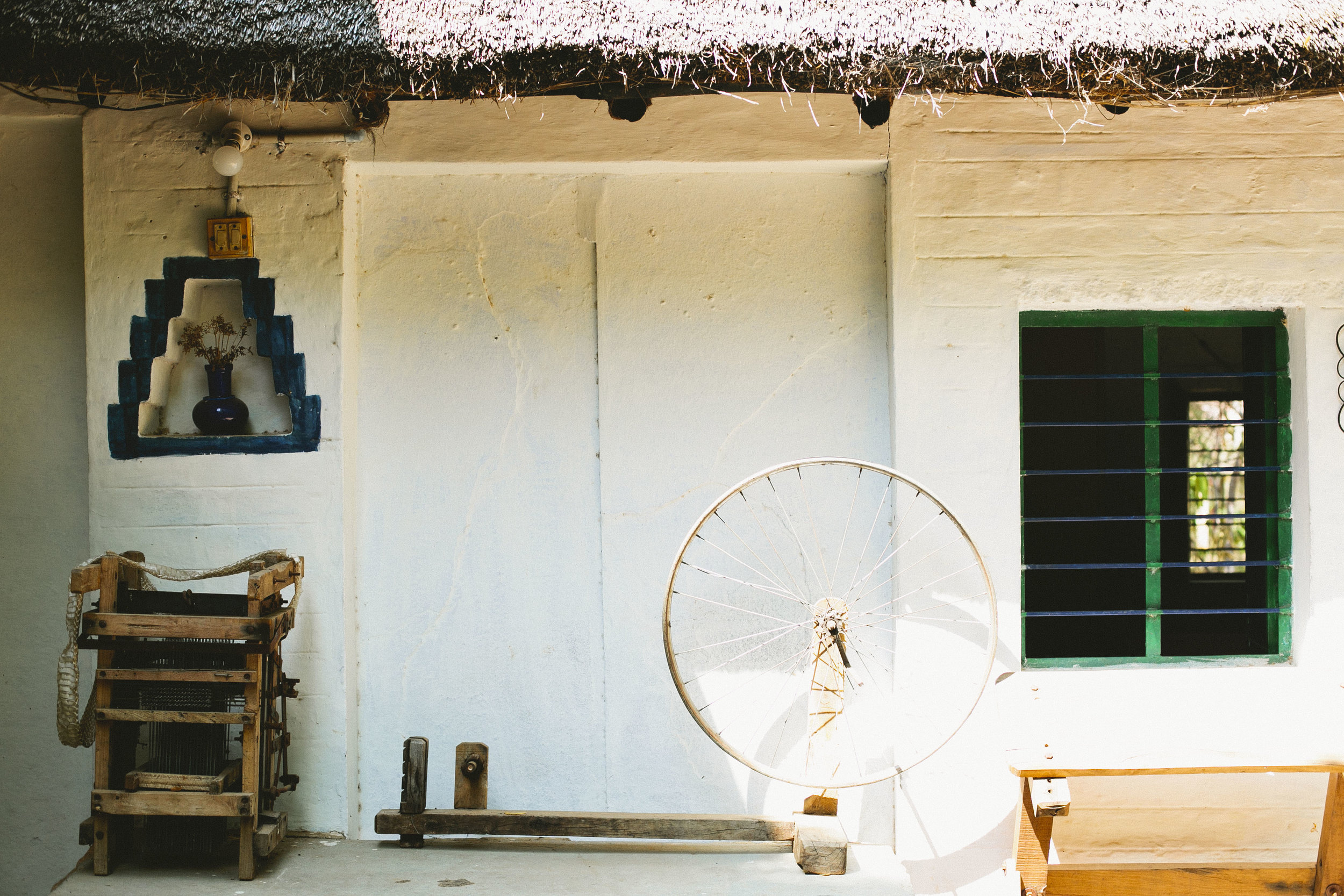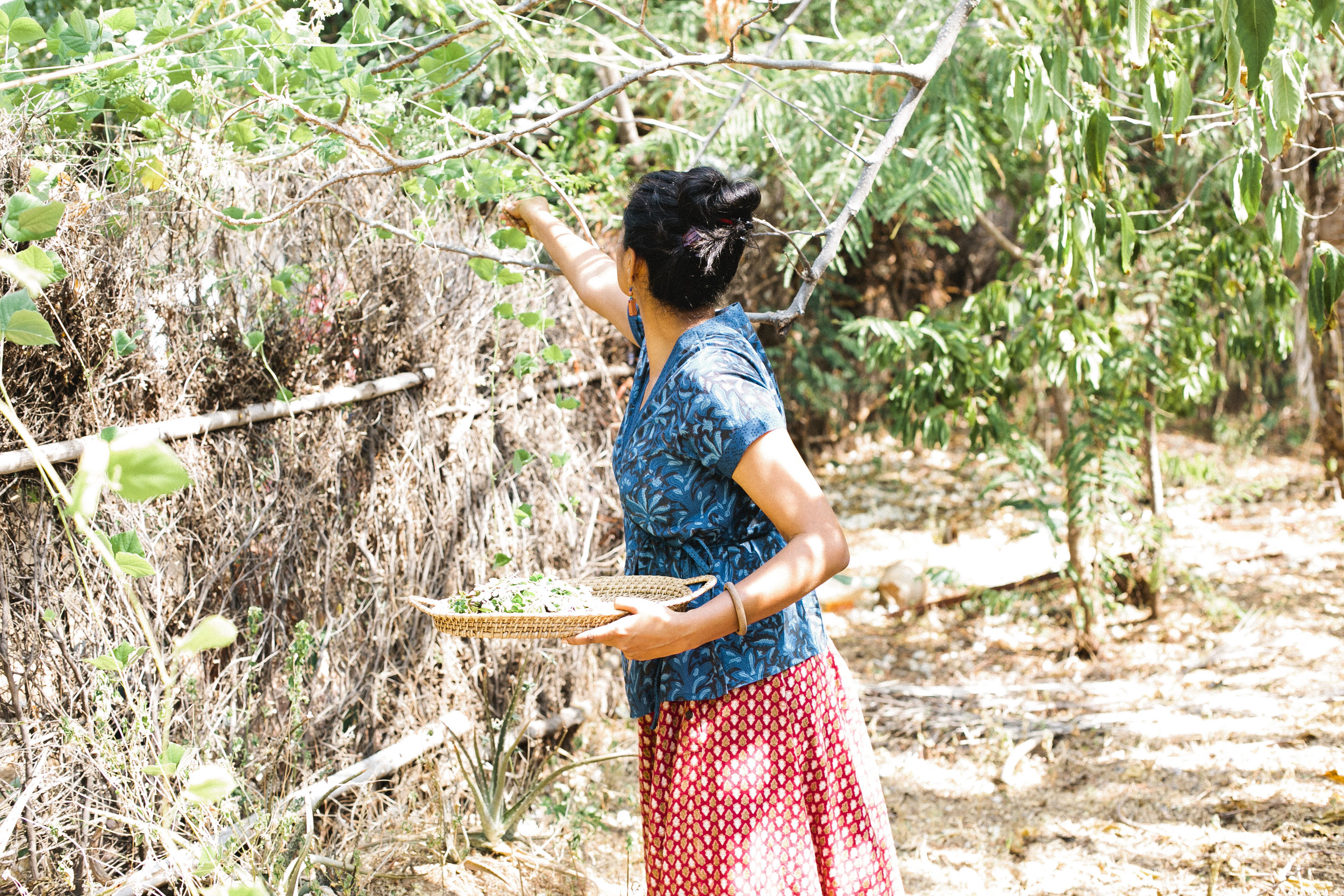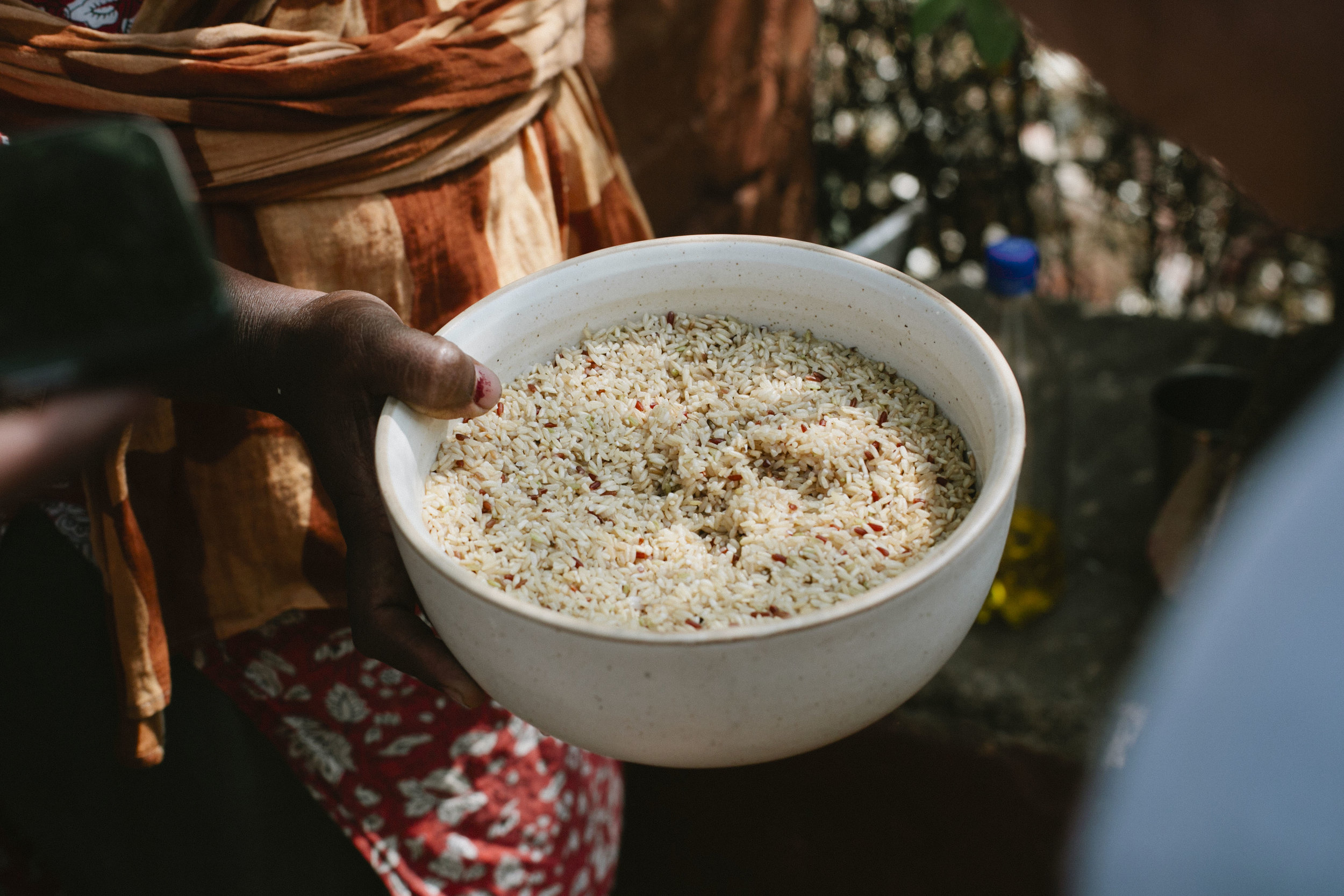In Timbaktu with Molly

#1000Kitchens is a series that takes you into kitchens all over the country, documenting heirloom recipes that tell a story. In this instalment, we visit Manisha Kairaly (Molly) and her partner Siddharth Rao at The Timbaktu Collective, an organisation that works for sustainable development in the drought prone Anantapur district of Andhra Pradesh.
Despite the late afternoon sun, there is a nip in the air. Sid keeps his shirt on as he walks down the steep embankment into the canal. The placid water ripples dark and blue against the orange-hued earth. There is no mistaking the beauty of this land; stark, resilient, echoing a quiet desperation.
Past the steely fronds of date palm and dusty bamboo clusters of Eethavanam, we follow closely behind Molly as she makes her way through the grass, around the abandoned stepwell, and into the clearing. Here in the Anantapur district of Rayalaseema, rain is a rare visitor. The land is blistered and scorched, and in these arid landscapes only the hardy survive.
When Molly's parents Bablu and Mary decided to make this place their home in the early 1990s, Timbaktu and the surrounding regions were little more than wasteland. But over 25 years of protection and regeneration, 9000 acres of wasteland have been converted to healthy forest. Timbaktu's work in sustainable agriculture, re-cultivating the landscapes with natural biodiversity, partnering with village communities to bring nature back to the deserted hills, has been documented extensively. To see the fruits of their labour one need only look around: The hills are alive with 240 species of birds – a magnificent leap from the meagre 40 species documented when they arrived; over 320 species of plants now cover the hills, when only two decades ago there were 120; and perhaps most telling is the significant rise in the ground water table levels, in some places by as much as 60 ft in two years.
Between chatting with us, Molly, with Shashi akka and RK from the Timbaktu community kitchen, get a fire going for lunch. In Molly and Sid’s three-room house (not counting an open kitchen and three sky-roofed toilets) something is always cooking. A low-slung red hammock swings languidly in the twig-fenced yard. Under the shade of a tree, a large stone dining table stretches to accommodate a dozen; Molly and Sid are never short on houseguests. Outside their bedroom is a large mud pot; traditional storage for grain. "The big ones, dhonthulu, go up to eight feet, and were typically built into the wall of the house. There is a hole at the bottom, and when you pull on this piece of string at the top, it elevates the stopper and releases the grain,” Molly demonstrates. “On top, the grain is covered with neem leaves, ash and cow urine, packed tight, to keep safe from pests. Food security was built right into the planning of the home. But you don’t see these anymore.”
Food sovereignty and food security mean very different things, Molly explains. “I could give you a hundred packets of Maggie noodles and you’d be food secure because we’d have taken hunger out of the equation.” But food sovereignty involves control over food – and traditional control over food means control over the seed. “Not only to be able to grow a good crop of okra, to eat and share with your neighbour, but also to be able to save the biggest, best, most pest-resilient of your crop for seed – to be sun-dried and saved for next year’s crop.”
In her work documenting dietary change in the region, Molly visited 15 villages early this year. She describes it like a scene out of post-apocalyptic Mad Max. “It was so dry this summer, so blindingly hot. And out in those remote villages, surrounded by miles of solar fields and the government’s wind farm projects, I’d meet these old women who would disappear into the back of dark huts and bring out a little cloth bag with seeds they’ve kept for thirty years. From them I’d learn what these seeds were, how to preserve them, the right way to intercrop… You can’t put a price on that kind of information,” she trails off.
We follow her as she walks around to the back, basket slung between hip and arm as she reaches for a sprig of leaves here, a twig there. The greens are for aakura pappu, a dal with four kinds of greens from around the area There’s also natti kozhi curry and pichi biyum on the woodfire, bheerekai gojju, ragi roti and rocket salad. "You can't ever say you came to Molly's house and didn't eat well," she winks over at us.
Bheerekai gojju is a signature Andhra chutney made from ridge gourd. Molly heaps the ingredients onto a flat slab of stone, a traditional stone grinder her mother brought back from Kerala. She pushes the fat rolling pin over the flat granite bottom, back and forth, steadily turning the leaves into a coarse, dark paste. We peer over her shoulder as she adds in a few extra green chillies. "I'm pseudo Mallu, pseudo Bong, true Andhra," she grins, confirming an Andhra weakness for spice, cultivated over years in Anantpur, despite her Malayali-Bengali parentage.
A bowl of wild grain, Picchi Biyum, is soaking by the stove. “Picchi means ‘mad’ in these parts,” Molly says, squinting as she ladles the rice into a pot over the fire. “But it also translates to wild." There's irony in there somewhere.
"The older folk love Picchi Biyum. They say this rice 'fights you back,' that it isn't limp and lifeless like white rice," Molly explains, describing its al dente mouth-feel. This variety of grain is shaped like a thorn ("to attach itself to clothing or fur, and transport itself"), and is drought-resistant, in that it needs less than a fourth of the water that a paddy crop would require. Much of Timbaktu’s work revolves around permaculture, which is a shared philosophy with the international Slow Food movement. Naturally then, when Slow Food set up their India chapter, The Timbaktu Collective played an instrumental role as one of the founding members. "Slow food is the default setting in India," she says. "In that sense we are at an advantage – like the rest of the Global South. Western techniques in food and agriculture have not yet fully penetrated, and India is so large, its cuisine so diverse, that it will be a while before it is all overhauled.”
As if on cue, RK beckons us over to sit by him as he kneads the ragi dough. He flattens each ball in the palm of his hand, then moves adeptly into a rapid slap-and-swivel motion, thinning the disc to a roti. On the fire, he lets it blister before lifting into a terracotta plate, where it keeps warm.
On the other side, under a bougainvillea creeper whose white blossoms carpet the floor, Sid mixes a bowl of rice for the two dogs, Boo and Munni. Boo, short for Soubhaghyavathi, is the baby of the family; a tall black and white puppy that is larger than most fully-grown dogs, she gets special attention as Sid hand-feeds her. We ask for a family picture, and the four of them come together – Boo is cradled on Sid's lap, and Munni assumes a more dignified spot at Molly's side. The shutter clicks, each of them smiling in different directions. Then, under the white blossoms, we settle in for a homemade meal under the Rayalseema sun.
Timbaktu's Ragi Roti Recipe
Ingredients
1 cup ragi flour (or Timbaktu Organic's Foxtail Millet Flour)
1/2 glass warm water
4 onions, chopped
2 sticks of curry leaves, chopped fine
1 tbsp of fresh coriander, chopped fine
1 tbsp ground nut oil
Salt to taste
Method
Bring the water to a boil, take off the flame and add in the flour.
Mix thoroughly to form a lumpy dough.
Add the remaining ingredients and knead well. Allow to rest.
Flour a surface and knead the dough into smaller balls.
In the palm of your hand, flatten each ball to a disc.
Set the disc onto the floured surface, then slap and swivel with both hands, into a thin roti.
Cook on medium heat till it darkens.
Serve warm with chutney or dal.
(The ragi roti can be stored for later as it keeps for a few days, but is best eaten warm from the tawa).
Words by Anisha Rachel Oommen and photos by Aysha Tanya; Illustrations by Minelli Pinto.
YOU MAY ALSO LIKE























